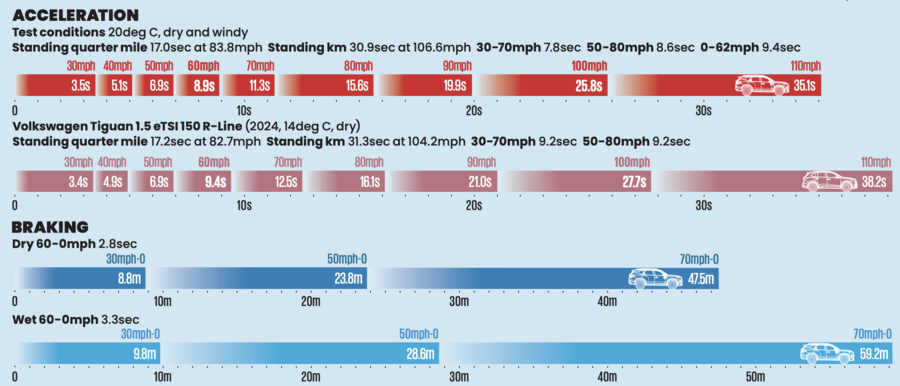The Bigster’s E-Tech hybrid system with a new engine may be a substantial upgrade on the Duster, but by and large the way it operates is very familiar. Because there is no clutch, it always sets off on the electric motor, and because that is reasonably powerful, at 50bhp, the engine might not fire up for a long time, particularly at lower speeds.
When it does, it may either sit at a fixed rpm to spin the generator and top up the battery, or it may power the car directly. It sounds somewhat coarse when it’s working hard, but because it’s torquier than in previous iterations, that’s not actually too often. Some of the E-Tech system’s other less pleasant traits – such as slow gearchanges and keeping the engine revs high on inclines – haven’t been completely eliminated but are noticeably reduced and rarely intrusive.
The hybrid system with the 1.6-litre engine could sometimes use up most of its battery, impacting performance, but this new version is much more diligent about replenishing the battery, which itself is larger too. This has eliminated such issues.
The slow gearchanges remain most obvious under full throttle. During our acceleration runs, there was a point, at around 80mph, where the Bigster stopped gaining speed for about a second, as the electric motor has to hold the fort by itself while the engine and gearbox switch ratios. In normal driving, where the software can more carefully pick its shift points and there is more power in reserve, this is simply not an issue.
Despite being slightly heavier, the Bigster enjoys a useful bump in performance compared with the Duster, requiring 0.7sec less to get to 60mph and 4.5sec less to reach 90mph. It’s still clearly slower than a Kia Sportage Hybrid, but no less pleasant to drive.
Both the accelerator and brake pedal are easy to modulate, but we wish the regenerative braking was handled differently. When you lift off the accelerator in D, there is fairly strong regen, which seems unnecessary since there is also a B mode on the gear selector for even stronger regen. The Bigster lacks an auto-hold function too and will always creep forwards from a stop when you release the brake pedal.
We found the Bigster’s braking performance a little underwhelming. We recorded a 47.5m stopping distance from 70mph on our first stop, which is just adequate. All our subsequent stops were around 50m, however. Similarly, a 59.2m stopping distance in the wet is okay, but the Mazda CX-30 needed just 53.9m.







